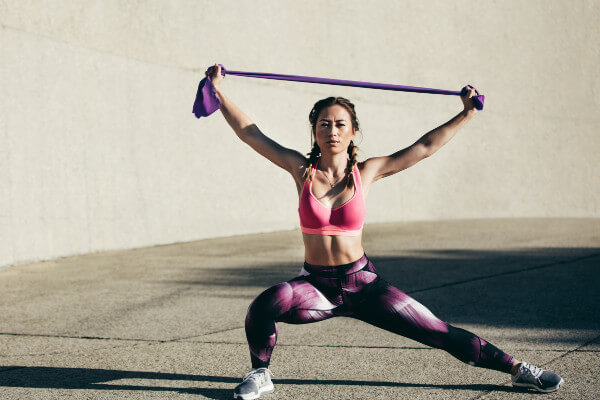Learn about the Menopause and Resistance Training

For some women, peri-menopause can be a welcoming stage of their life when you truly come into your own power, but the process of getting there can be rocky. Menopause describes the first day after having no periods for a consecutive 12 months. Peri-menopause however, is the time when you may experience symptoms such as:
- changes in the menstrual cycle and flow
- hot flushes and night sweats
- insomnia and fatigue
- depression/anxiety
- low libido
- PMS
95% of women experience menopausal symptoms between the age 44-56 with an average age of 50.
As oestrogen production reduces you may look at life through a slightly different lens, seeing relationships and your life in a different way, acknowledging all the times you put others first before yourself and caring for others when you needed to care for yourself.
This is why it is so important to work with your body and embrace the change, develop self-awareness and kindness towards yourself and realise you can put yourself first sometimes, without feeling guilt.
During the ages 35-45 women are prone to weight gain, and by the time we reach peri-menopause, most of us are carrying excess weight and that’s a problem. Excess weight not only increases the risk of diabetes and heart disease but encourages your body to become oestrogen dominant as your fat cells produce their own oestrogen.
When your body stores more oestrogen than it needs during peri-menopause this can cause havoc on the opposing hormone, progesterone. The combination of excess oestrogen and low progesterone has many effects on our body. Sodium is easily retained which increases water retention. This causes many women to feel ‘puffy’. Other symptoms of oestrogen dominance can be sore and tender breasts, mood fluctuation, low motivation, irritability, headaches and weight gain, especially around the middle.
Our diet can play a huge part to prevent oestrogen dominance. Healthy fats such as olive oil, nuts, seeds, oily fish and avocados manufacture hormones and help break down excess stored fat, so a good balance of healthy fats as part of your overall diet is important.
Reducing simple carbohydrates such as white breads, pastries, cakes, biscuits, white pasta, sweets, chocolate and highly processed foods will have a huge positive impact. Not only will reducing these types of carbohydrate reduce blood sugar level spikes and insulin levels which promotes weight gain, but every 1g of carbohydrate holds onto 3g of water within the body which can result in feeling ‘puffy’. (3)
How can resistance training benefit menopause?
Resistance training (also known as strength training or weight training) is the use of body weight or external weight to add resistance to a muscular contraction to build the strength, anaerobic endurance and size of skeletal muscles. During menopause, bone density decreases which can lead to osteopenia resulting in the disease osteoporosis. Osteoporosis is the weakening of bone, making you more prone to breaks and injury. Along with reduction of bone density, muscle mass also declines. Resistance Training helps to prevent muscle mass from decreasing which has a positive impact on joint stability, body tone and bone density.
Why resistance training and menopause go hand in hand
Not only does resistance training help bone density and muscle mass, it also has a positive impact on our mental health. First of all, to train, you are putting yourself first, putting your health first and doing something that will have a positive impact on your life. Prioritising this is such a beneficial and positive step.
Exercise stimulates the brain which releases endorphins. Endorphins are a type of neurotransmitter, or chemical messenger. They help relieve pain and stress. Endorphins are only one of many neurotransmitters released when you exercise. Exercise releases dopamine, norepinephrine, and serotonin too, these brain chemicals play an important part in regulating your mood.
So, where is a good place to start?
Aim for:
- x2 resistance sessions per week
- working with 2-4 sets per exercise, in the rep range of 8-15
- 6-10 exercises targeting all major muscle groups
- lifting at least 60% of your maximum capacity
Seeking help from a fitness professional, such as a personal trainer to build confidence around resistance training as well as learning the fundamentals around health and fitness could be a good place to start.
Thanks to Chloe Hurd at Bodymynd Wellbeing for this article. Visit her website at bodymynd.co.uk and follow her on Instagram at @bodymynd.
